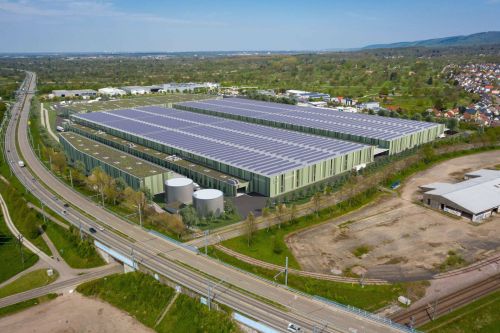Back to stagnation
Stock market reportThe interpretation of global macroeconomic data could give rise to difficulties. Good figures encourage positive forecasts, but they could mean that the central banks will turn off the money taps by putting up interest rates. Weaker data postpone such a prospect, but are evidence of deteriorating company results, which leads to an increase in the unemployment rate and falling demand for goods and services. This is the brain-teaser investors have had to puzzle over recently while browsing through the data from the largest economies in the world. Because the macro data, from the US and Europe alike, has turned out to be worse than expected, but this has also brought with the hope that there will be a lack of reaction from the central banks. And this is the factor investors have been focused on for the last few quarters, even though such occurrences have been periodically disrupted by political events, such as Brexit or the US presidential campaign. When the condition of the economy remains a question mark (signals of a slowdown coming from virtually each corner of the globe), investors prefer to sit back and wait, holding onto less risky securities rather than shares. Investors on the Warsaw Stock Exchange were certainly in a gloomy frame of mind. This was exacerbated by local factors. On the one hand the economic growth has been successively weaker than expected, according to subsequent data of the Polish Central Statistical Office (GUS) – in Q2 the economy grew by 3.1 pct, slightly below economists’ expectations, but the structure of this growth is a source of concern. The Polish economy has been developing mostly thanks to consumption, whereas investment, including in infrastructure, has been on the decline. In this situation, analysts and the government are downgrading their growth forecasts for this year. The second aspect having a negative impact on the WSE is the political situation – in September the act concerning mortgages denominated in Swiss francs is to go before the Polish parliament, while the future of open pension funds could also be decided upon, which will also have some impact on the stock exchange. In this situation falling indexes are unsurprising – the WIG lost 2.7 pct, while the WIG20, instead of heading towards 2,000 points decreased by 6 pct to 1,754 points, moving back towards its bottom level of the beginning of July. In doing so, the WIG20 lost all of its gains of between the end of June and mid-August. The industry indexes looked good against this background – defending their values of mid-August. WIG-Construction lost 1.3 pct and WIG-Developers only slipped back by 0.2 pct. The development segment has been the star that shone most brightly over the last few months and has stood out against the entire stock exchange. When comparing WIG20 and WIG-Developers in terms of where they were last year, it can be seen that the former has lost over 20 pct (from a level of 2,200 points) whereas the latter has increased by nearly 20 pct. Investors are confident about the prospects for the sector, which in the holiday period was confirmed by healthy apartment sales data and the mostly good Q2 2016 results in August. Dom Development registered an increase in revenue of more than 40 pct (PLN 229 mln) and net profit growth of 73 pct (PLN 18.4 mln) as the developer sold the highest number of apartments in its history – 701. However, the greatest increase in share price belonged to J.W. Construction (despite decrease on the broad market indexes). Its strong results (revenue of PLN 255 mln, y-o-y growth of 100 pct, and a fivefold increase in its net profit to PLN 26.1 mln) encouraged investors to shop for shares of the company. Polnord also improved its figures (revenue of over PLN 105 mln compared to PLN 97 mln a year earlier and a net profit of PLN 3.1 mln compared to a loss last year) – even though the influence on its share price was exactly the opposite of that for J.W. Construction. Analysts emphasise that there are many hidden investment opportunities in the segment, mainly thanks to dividend payments from growing profits. Furthermore, the factor that had been driving sales – subsidies from the ‘Apartments for the Young’ scheme – could now be having the opposite effect. The funds for 2016 came to an end in March and those for 2017 were blocked in July. So by the end of 2016 the scheme can only be used by those who want their own homes no earlier than 2018.
Hungarians hold on tight
The index of the Hungarian stock exchange withstood the negative trends and even managed to increase slightly – by just over 1.3 pct. The Hungarian economy is benefiting from the ongoing revival and a growth rate of around 2–3 pct, which translates into investor interest in buying shares (even though this is marginal taking into consideration the turnover). While the WIG20 has lost 20 pct in the last year, the BUX increased by 33 pct. Prague’s PX50 lost value slightly over the last four weeks, confirming that its fluctuations are closer to the WIG than the BUX (its rate of return was negative over the year and it amounted to 13 pct).






















































